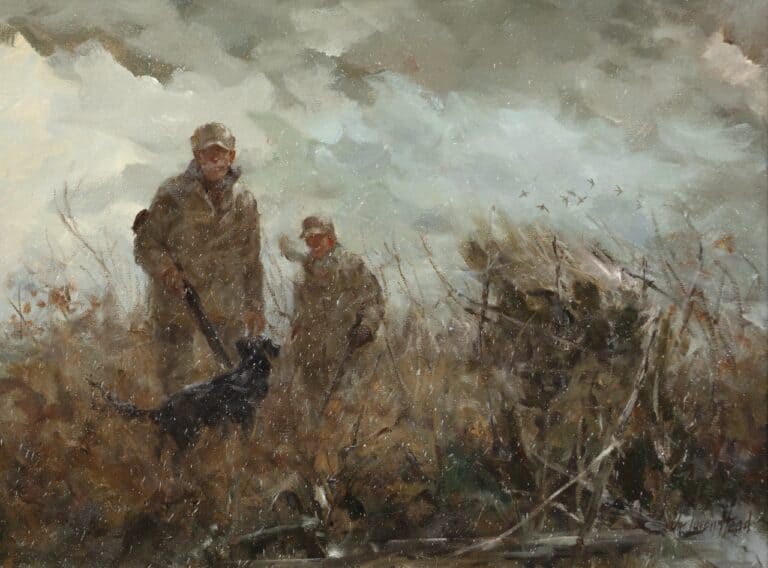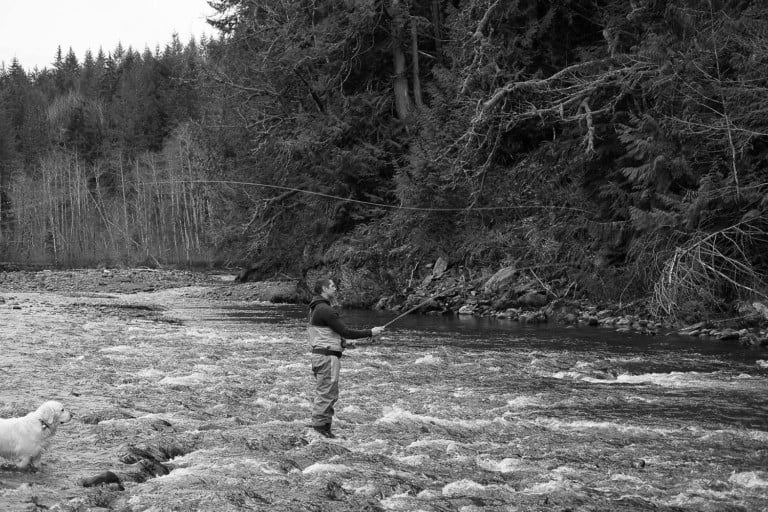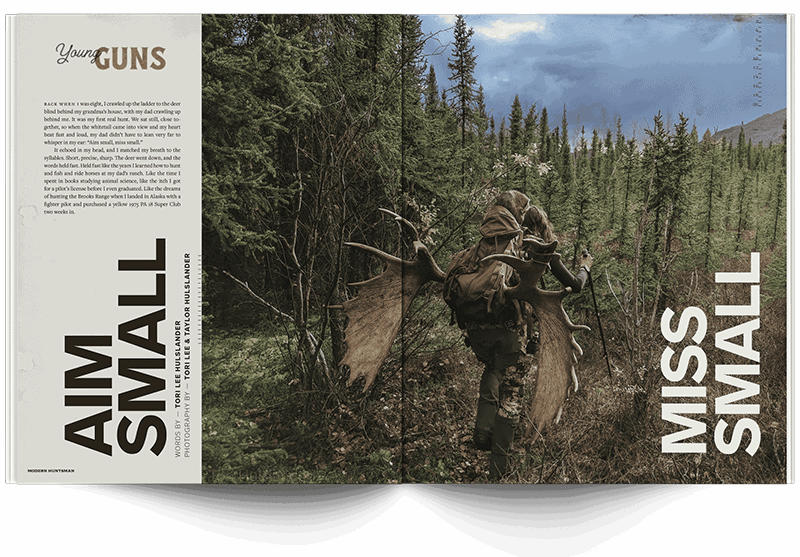Adam Greentree has traversed mountains for years now. He is a family man and avid bow hunter. For him, it’s a lot more than just a weekend get away, and more so a place where he can connect to the primitive traditions and aspects of life that our ancestors have encoded into the very fabric of our DNA, from bloodline to bloodline.
In between the hustle and bustle of running a business on the West coast of Australia, 3,700 miles away from his home here in Newcastle, Adam has spent his spare time hand building a cabin on his property; tucked away in a secluded valley, enriched with deep aboriginal history, he has built the cabin entirely from felled timber and recycled materials, sourced directly from the property.

Nothing comes easy in the wilderness. As we disconnect from the modern amenities most of us have become accustomed to, life begins to skew and the transition can be complex. Adam is and always has been a stoic man at heart; he finds the simplicity and quality of living without these modern features has had a profound impact on him and his family’s life, and this is what drives Adam. There is no greater teacher than nature, and the lessons he has learnt by being in touch with his surroundings and utilizing the mountain’s natural resources to survive has left an inexplicable imprint that has not only defined his personality, but has entrenched a remarkable and esoteric respect for the land. It has deeply inspired him to pass on his knowledge not only to his children, but in time, his children’s children as well.
As I gazed up at an unforgiving ridgeline that snakes its way from the base of the cabin to the vast peaks of the valley, I prepared myself for a difficult 11-mile ascent. I gently blow the steam off my morning coffee as I sit at the table and wake myself up. It is 5:00 AM and the cabin is still lit with candles as the first faint hue of light glows far behind the mountains. Adam is fresh-faced and I hand him a coffee. This time of year, most bucks have shed their antlers and are feeding harmoniously together out there somewhere in fading twilight. In a few months, they will go to war against each other during the rut. This unspoken and beautiful truce in nature has vexed me for so many years now.
Snapping me out of my thoughts, I hear a thud on the front porch. Adam has thrown his bag out there ready to get going. We have packed our bags with overnight camp gear, some warm clothes and various other bare essentials, leaving enough room to hopefully pack meat out.

That time of year, during the early transition between spring and summer, the nights and mornings are bitterly cold in comparison to the 90-100 degree days, so its essential to prepare for the drastic changes in temperature.
Setting off in the dark is always a tricky task. It takes roughly 45 minutes for the sun to provide enough adequate light for me to not trip over rocks and holes, as Adam powers ahead of me. We avoid using flashlights during this time so as not to spook any herd of deer that may be pushing down the ridgeline to feed in the valley for the morning.
The sun finally begins to stretch its long arms through the peaks of the mountains and has brought to light a heavy fog that has left us with little to no visibility. The odds of glassing an animal in the valley below were now stacked against us.
The recent rain and a thick layer of dew on the green clover has completely soaked our pants and boots. The grass is long and each step feels like wading through a river; it is impossible to keep dry. It’s only been a few hours now and we are already feeling the beginnings of trench foot. We begin to stop every 30 minutes to take our boots off and wring the water from our socks, but this is only a temporary fix – another 5 minutes of hiking and they’re soaked again.
The heavy fog and cloud cover gets worse the higher we climb and has now foiled any chance of the sun breaking through to dry the ground. Our waterlogged boots are heavier with each step, and despite the mountain’s efforts, we don’t admit defeat yet.
Up ahead in the distance, we spot a rocky outcrop – a perfect dry place to empty our boots of water and have a quick snack. I glance over at Adam who is tapping his upside down shoe and watching the water trickle out with a casual smirk on his face and we both chuckle. Our exhaustion and bad luck has overwhelmed us to the point of laughter. Our bodies ache from old injuries and we look down at our feet; four pale raisins that used to be our extremities.
Adam exhales deeply as he prepares to keep moving. The thought of giving up and heading back down to the cabin, drying my feet in front of the open fire with a hot coffee is a euphoric taunt that will not leave my mind. Adam turns to me and says, “Eamon, have you ever looked back at a time when you’ve been challenged mentally and physically, where you were at the point of giving up and thought… ‘Man, I would never do that again’?” – No… I hadn’t. In fact, looking back on all the things that have challenged me, it’s always proven inherently beneficial to my development. Adam nods in agreement. When you’re in the pit of a struggle, the positive outcome is generally the last thing on your mind or completely lost in the hardship. Adam and I have both found that the key is transforming that raw emotion into energy to strive forward. That said, we lift our weakened bodies, ready to venture onward and upward.

Being immersed in the wilderness has a way of heightening your senses. You begin to feel more in tune with the sounds and scents around you. Your peripheral awareness increases, as does your ability to determine distance. There is an arcane ambience in the forest – it resonates through your body, through every bone, right down to your feet and back into the dirt of the earth. It is this inherent connection to nature that Adam strives for.
The leaves on the Snow Gums start rustling as a breeze moves up the valley. Normally, a breeze would be an unwelcome nightmare to a huntsman; it pushes your scent upwind, alerting any animal that you are close by before you can visually target them. Though, in this instance, it was welcomed as it also began to push the cloud cover away from the mountain. It’s not too long after and our visibility has gone from 20 feet to 100 feet, and continues to get better the further we climb.
Adam spots a cliff face in the distance that will provide a good overview of the valley to our left hand side. We gauge the distance to take us about 45 minutes. Up the ridgeline and then a few hundred feet down a rocky bluff will lead us there. The bush is thick now and the damn wind has all but pushed that mist back up into the atmosphere. Our heavy packs, swayed by the wind, give us an unnerving push forward as we try to navigate ourselves down over the jagged rocks.
It is now mid-afternoon. The sun is shining and we have made it. Perched on the edge of a cliff, with our boots and socks drying, and our legs dangling over the edge, we finally feel a little relief. As it is later in the day, most of the deer have bedded down into the long grass, making them incredibly difficult to spot. Far off in the distance, we notice a few wild boars with a group of goats feeding on the shrubs by a creek bed. I can see the excitement in Adam’s body language– our first spot of the day has him electric and gearing to go. Unfortunately, still no deer to be seen. This area is full of gullies and creeks, and even from this high vantage point, it’s impossible to view any activity in the crevices between us and the other side of the valley – the only way we are going to find out is to descend into the depths of it.
We have a decision to make now; make our way into the valley and hunt for the afternoon or continue up to the peak and set up camp for the night, which will allow us an immediate vantage point for hunting in the morning. Although the skies were blue and clear now, there was no telling if that fog would roll back in overnight and hinder our chances of chasing deer in the morning. Our option to hunt now was more viable, but also meant adding another 5-6 hours on top of the already 10 hour hike to our current position. We had travelled 8 miles up a steep and constant incline, so another 4-5 miles down into the valley and back up would be a test to our mental barriers of logic and reason. But as they say, nothing good comes easy in this world. If we were prepared to take the life of one of these wild creatures, we also needed to sacrifice.

We decided to leave our packs on the ridgeline and head down into the valley. Normally, we would not go without our gear, but if we wanted to make it back before dark, we had to go in light and travel quickly. We both drink the last of our water and Adam tucks a dry-bag into his pocket in hopes that we may come across a creek with flowing water. It isn’t always ideal heading out and knowing that you’re solely relying on yourself to source food and water. Each time is a test of trust and faith in your perseverance and skill. Alas, time and weight restrictions were vital to complete this hunt – I stop questioning my ability and we move out. The terrain and foliage changes as our altitude drops, heading down into the basin. The unavoidable stinging nettle takes your breath away when it catches on your legs, releasing tiny toxic spurs into your skin.
Adam takes the lead and the slight headwind favours our direction. We’re now heading toward one of the bigger gullies that were not visible from our perch on the ridgeline. An undertow of anxiety rises the further we creep. Each step we take on the backside of the gully gives us a few more feet of visibility into the centre of it. Adam throws his hand back toward me with a signal to stop, then motions it downwards to get low. I crouch and my knees begin to shake from the punishment and fatigue the have endured thus far. Adam sits and stares intensely for what seems like 35 minutes, but was actually probably more like 3. Slowly, he begins to position himself by finding a balanced spot to put his left leg downhill, then directs his vertical weight on top of his right leg by tucking it under him and sitting on it. He quietly and gently takes an arrow from his quiver and nocks it into place. Every movement is performed with such delicate precision and is fascinating to watch. My anticipation had my heart pounding – whatever was in front of him was close. I hold back every urge in my body to get closer and peek over his shoulder like a curious child – the suspense was killing me.
Adam points the bow downhill to allow room to draw back his arrow. In a slow and smooth motion, he connects his trigger release to the D loop and pulls back the 70lb string until the cam locks it in at full draw. He turns his shoulder perpendicular to the side of the mountain with his releasing hand tight up against his cheek. He aims down the sight. There is a moment of complete stillness where time stops. I have nowhere to look but at Adam. I am watching this man; I am seeing our ancestors in him. I momentarily put myself in his shoes. I see him exhale a deep breath and in that same moment, I hold mine. I want to know what is going through his mind. His finger placement switches from being in a safe position to being curled around the trigger. With the slightest jolt, the arrow is released. There is no loud bang, nor echo like that of a gunshot – there isn’t even a momentary lapse in the birds singing up above. It is silent, the same as it was half a second ago.
Our ears pick up the scurry of leaves and twigs breaking ahead of Adam and the sound tumbles downhill. He looks back at me and gives me the thumbs up. I still have no idea what is going on, but I see a release of tension in his face. I pick myself back up off the ground and head over to him. He points out the spot, about 35 yards ahead where a red deer hind was feeding. He confirms that the arrow passed through the animal’s vitals and that she had run about 80ft downhill towards a flowing creek.
We head downhill toward the deer and there is an ultimate feeling of sorrow that flows through us. We find her lying in the leaves amongst the many wildflowers that adorn these mountains. She looks peaceful, but I still feel an ache in my heart. Adam takes a seat in the dirt beside her and runs his hand down her neck, straightening the fur into the lines of her body. He sits with her for 10-15 minutes, processing, correlating and embracing all the emotions that are endured when taking the life of such a majestic creature. As I watched Adam make his peace, I realised that this was an incredibly important experience in my life. There are people who can extinguish a life and be aware of that, and that’s the extent of it. But then there are hunters like Adam – hunters who see the absent glint of life in a creature’s eye and completely acknowledge their responsibility and ownership of their actions. They pay their respects and are grateful for that life with every fibre of their being. It is a beautiful thing to witness, and a difficult but remarkable thing to feel for the first time.





